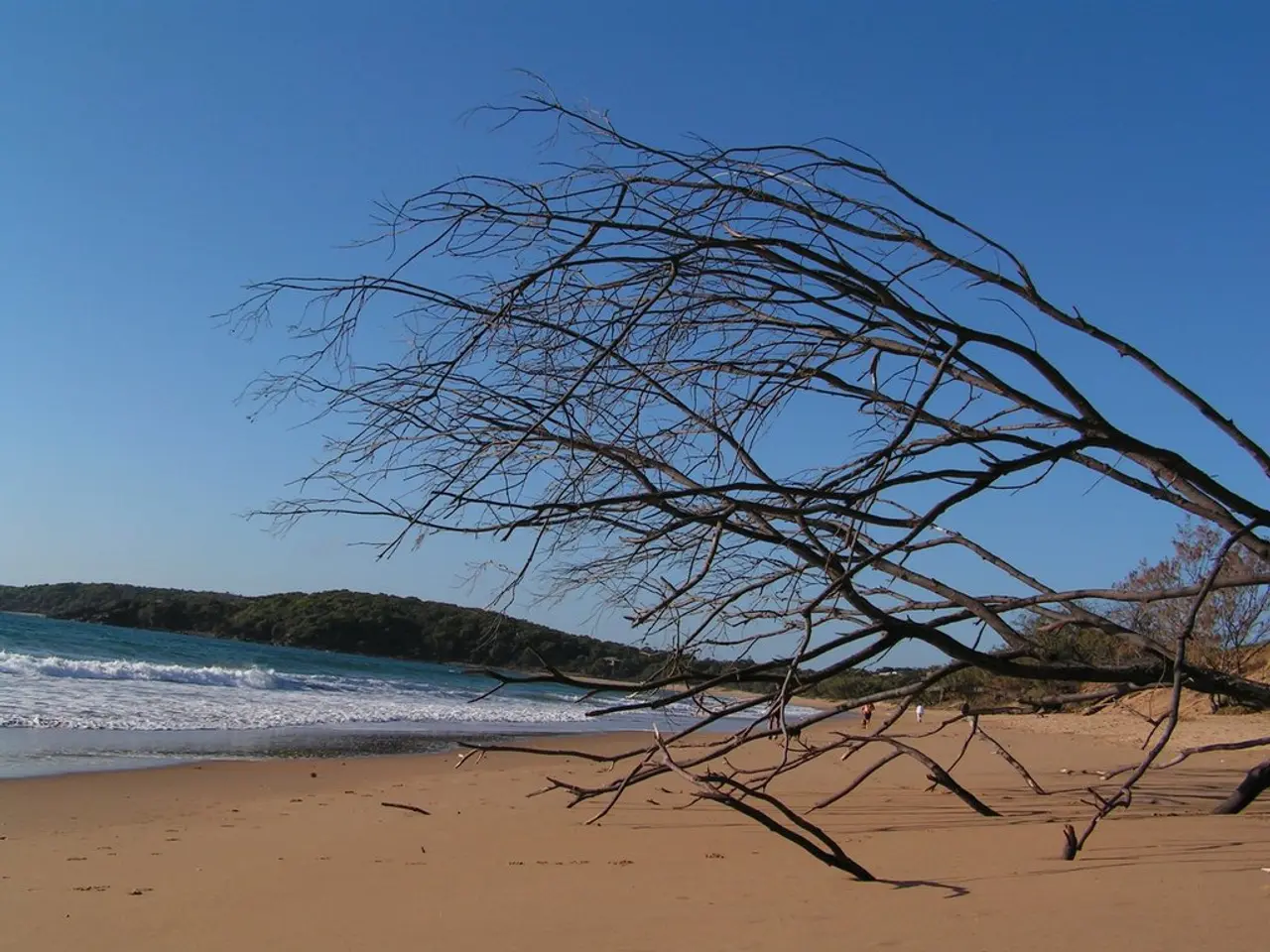Sizzling Summer Peak - Weather Front Brings an End to the Prolonged Heat Spell
A scorching heatwave has swept across Europe, with Germany and France experiencing unusually high temperatures and forest fires. The German Weather Service (DWD) has warned of exceptionally high temperatures close to 40°C, but just under 40°C was the highest temperature recorded during the heatwave.
In Germany, peak values reached 38-39°C in the northeast and almost 40°C in western and northern Germany around late June and early July 2025. The hottest areas were generally in the northeast and parts of western Germany, with temperatures nearing 40°C but not exceeding that threshold significantly. The DWD has provisionally registered the hottest day of the year so far in Germany, with a temperature of 39.3 degrees Celsius in Andernach, Rhineland-Palatinate.
The heatwave has caused disruptions such as buckling motorways near Bremen and impacting transport services in the west. In a response to the forest fire in the Saalfeld-Rudolstadt district in Thuringia, a state of catastrophe has been declared. Firefighters are battling forest fires in several regions of Germany, including a forest fire in the Gohrisch heath at the border of Saxony and Brandenburg that has led to the evacuation of a home for the disabled with around 100 people affected. More than 200 emergency services are on site and a police helicopter is assisting with the firefighting.
In France, large parts of the country were covered by the highest warning level (red) on Tuesday, including the metropolis of Paris, with temperatures locally reaching over 41 degrees Celsius in southern and central France. Tragically, at least three lives have been lost due to the ongoing heatwave. Two deaths were attributed to heat-related complaints, and one construction worker died while working at a football stadium in Auxerre.
In Spain, two people lost their lives in a massive forest fire that consumed acres of farmland and bush in Catalonia. Meanwhile, Argentina's capital Buenos Aires experienced unusually low temperatures, with the lowest temperature since August 1991 recorded at minus 1.9 degrees Celsius.
Looking ahead, the DWD predicts that the weather in large parts of Germany will calm down in the coming days, with cooler maritime air bringing lower temperatures that could drop by more than ten degrees compared to the heat peak on Wednesday. On Saturday, strong cloud cover and showers are expected in the north and northwest, especially in the afternoon, while the rest of the country will remain mostly clear and dry.
Further thunderstorms are expected in northwest Germany in the evening, and in the night to Thursday even as far as Mecklenburg and the western Baltic Sea. However, on Friday, it will be partly cloudy in the north with isolated showers, and mostly sunny and dry elsewhere, with temperatures potentially reaching the 30-degree mark again. On Thursday, scattered showers are expected to move from the center to the southeast, with potential thunderstorms in the south and southeast later in the day.
In a Cologne high school, 64 thermostats and heating body valves in around 30 classrooms were found to be defective, causing heating issues. Despite these challenges, the heatwave is expected to subside in the coming days, bringing some relief to the affected areas.
[1] [DWD Heatwave Warning](https://www.dwd.de/DE/warnungen/warnungen_node.html?&Meldungsnummer=1000080) [2] [BBC News: Germany Heatwave](https://www.bbc.com/news/world-europe-57492132) [3] [Deutsche Welle: Germany Heatwave](https://www.dw.com/en/germany-battles-heatwave-as-temperatures-near-40-celsius/a-55719044)
The extreme heatwave in Germany, part of the broader climate-change challenge, has resulted in peak temperatures reaching 38-39°C in northeastern and almost 40°C in western and northern regions around late June and early July 2025. This environmental-science issue has caused disruptions such as motorway buckling and forest fires, with the DWD predicting a calmer weather pattern in the coming days.








